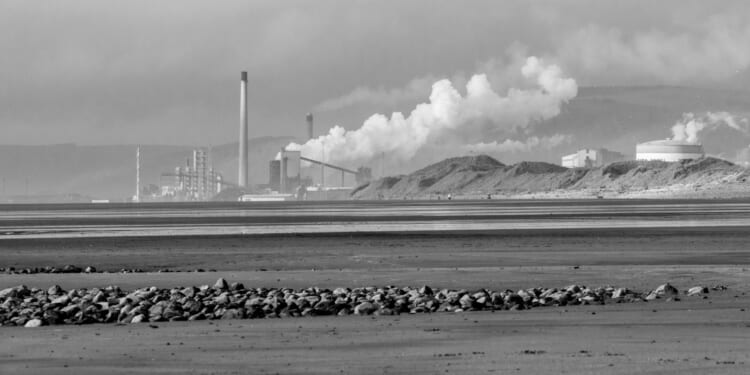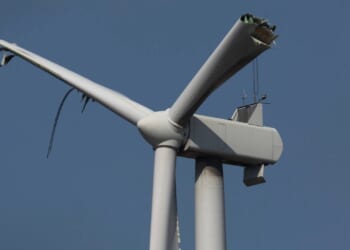Where is the country’s long-term strategy for the management of national assets? You wouldn’t be alone in wondering whether there is one at all.
But it is a question being brought to the fore again with the British Steel debacle: how can it be that the Business Secretary is buying coking coal in crisis talks abroad to keep the UK’s last blast furnaces open (even reportedly placing the Royal Navy on alert to escort shipments), when just months earlier the Energy Secretary banned new coal mines in the UK, including a new coking mine in Cumbria?
We should not be waiting until the point of collapse for obvious strategic national assets to be recognised as just that: national assets deserving of a long-term strategic plan.
The worrying thing is that the same questions could be asked of a number of our other national assets. How can it be that the state of the roads are shocking and only getting worse, with a multibillion-pound repair backlog growing and a highways policy currently in managed decline?
How can it be that decisions over some of the country’s other important assets have been snapped up by overseas companies, whether it be in the case of Heathrow airport or Thames Water, through short-sighted decision making in a car boot sale of the nation’s infrastructure?
Or take the approach to plutonium, of which the UK has the world’s largest stockpile, but is now set to be immobilised and never be used again.
There are companies that want to use plutonium to create fuel in the UK. There are other products like americium, which can be produced from plutonium and used in space batteries due to their long half life. But why is it instead that we are choosing to deem what should be a national asset as a liability?
It gives cause for concern, enough that requires a rethink on how we approach the long-term strategic management of the UK’s assets.
We used to have a National Asset Register, fuelled by data, which made stark positions on their value to ensure we made the best use of our assets and drive us towards long-term decisions – and it is something we should return to.
The last Labour government first produced the National Asset Register in 1997, in what was colloquially called the ‘modern Domesday Book’, listing the assets owned by the government.
When William the Conqueror commissioned a great survey of his English realm at Gloucester in 1085, the result was such a thorough and wide-ranging work that seemed to the succeeding generations to have come from another world, with the huge amount of information earning it the Domesday title.
When Gordon Brown commissioned a survey of his new realm, it was little wonder it picked up the same moniker, with a list of all government assets individually worth more than £1,000, including: 5,455 kilometres of motorway, the London Underground, Tornado aircraft and Trident submarines, vehicles, buildings and computers.
But the register was only updated in 2001 and 2007, before in 2009-10 it was decided publication would end ahead of the Whole of Government Accounts publication (a consolidated set of financial statements for the UK public sector, which also factors in Government’s assets and its liabilities).
This version was focused on the costs of holding and using assets, with departments having to meet costs rather than overlooking them, providing an incentive to dispose of costly non-productive assets.
But it is time once again to return to a survey solely focused on the nation’s assets – and it should not be a challenge simply of using capital as a measure of efficiency. What is important is to both have the full data of assets, but more importantly use them to determine whether they are giving a return on national investment and plan strategically how to secure that.
For example, the plutonium was, for years, treated as a zombie, because until you decide whether it’s a fuel or a waste, you don’t know whether it’s an asset or a liability. Why you would want to formally classify it as a liability, show it on the balance sheet and wind up with all the following costs in this fiscal regime is boggling, especially because it was not going anywhere.
Yet there is very little long-term thinking, honesty, or indeed, data around decisions like these.
I know of one former senior Whitehall figure who suggested to the Treasury that, as you walk into the building, they have a list on their wall of ten big categories of national assets and infrastructure, and for each of them you have stark data on how many years of remaining useful life it has, how much you’d have to spend to keep it at that per year and how much you’d have to spend over the next 10 years to get it up to standard.
“If you had those numbers, Parliament would have a field day, because I guarantee you, people would weep when they see them,” they told me. “We don’t hold the system accountable.”
Every day, ministers and senior officials are making decisions that can often have multi-generational consequences, but this aspect often falls by the wayside as people worry about the cash for the next spending term.
There is not a guiding mind in terms of national assets or anyone looking at a big structural picture – and there needs to be. There should be some sense of stewardship to think in the long-term about actions and consequences of how we use and secure our national assets.




![Jasmine Crockett Justifies Mass Illegal Immigration With Bizarre Argument [WATCH]](https://www.right2024.com/wp-content/uploads/2025/03/1742007023_Jasmine-Crockett-Justifies-Mass-Illegal-Immigration-With-Bizarre-Argument-WATCH-350x250.jpg)
![Red Sox Fan Makes the ‘Catch of the Day’ with Unconventional ‘Glove’ [WATCH]](https://www.right2024.com/wp-content/uploads/2025/04/Red-Sox-Fan-Makes-the-‘Catch-of-the-Day-with-350x250.jpg)

![NYC Tourist Helicopter Falls into Hudson River, Siemens Executive and Family Among Those Killed [WATCH]](https://www.right2024.com/wp-content/uploads/2025/04/NYC-Tourist-Helicopter-Falls-into-Hudson-River-Siemens-Executive-and-350x250.jpg)







